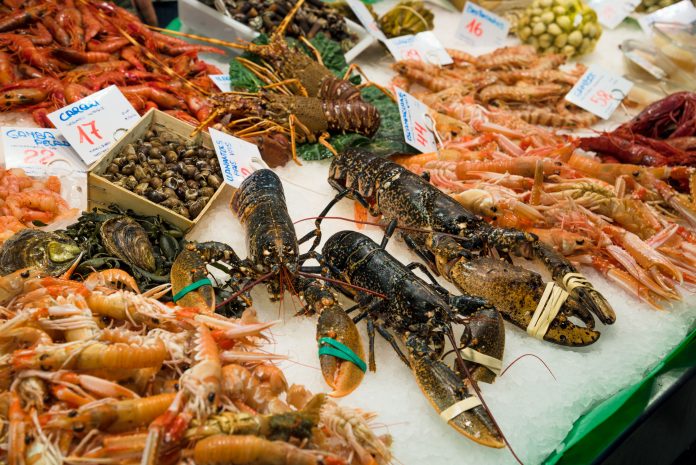Here, Professor Kouji Takeda and others discuss the NODAI A-STEM Education project, which looks at the impact of biological pigments as teaching material
Research and development of NODAI A-STEM project based on agricultural science
STEM education consists of Science, Technology, Engineering and Mathematics. Among STEM programming education is especially popular in Japan, while themes and topics related to agriculture are rather poor. At our university the research activities cover a wide range of scientific research related to agriculture, meaning that we have a potential to develop unique curriculum and teaching materials.
The major points of our insight can be summarized as follows: 1) Essential for human living. 2) Compensation for the lack of direct touch to nature. Recently, children can’t get the experiences directly linked to natural environment. Hence, children don’t sufficiently appreciate why those organisms in foods have certain colors and shapes. 3) We must reconsider the value of agricultural science.
Thus, we initiated a research for STEM education placing emphasis on agriculture. We thereby call this project NODAI A-STEM Education.
This research has mainly two significances. The first significance is for the research on science education, because agricultural science has a variety of essential contributions to human life. However, theoretical and scientific aspects have been widely neglected in agricultural education, except for some specialized agricultural high school. This project is firstly created to establish a platform to improve the current status of agricultural science education in Japan. Secondly, the aim of the basic frame of this project is to draw attention from early stages of experimental biological lessons at school. Toward this goal, we are planning to work collaboratively with teachers in the classrooms.
Discovery and problem-solving approach from a macro- to a microscopic perspectives
Salmon is one of the traditional foods in Japan and is currently the most eaten among the fish. Both grilled fillet and sushi salmon are orange in color, but the salmon are originally white. So why are the fillet and sushi salmon orange? We are developing teaching materials and curriculums to make students think about something like the apparent color of their familiar things. It is important for science education meant for children to develop teaching materials and curriculums to enable them to see the whole picture through exploring the ecology of organisms, the individuals, and even the microscopic observations of them at the material levels.
We have identified three pillars of the educational research, namely, we focus on teaching material research, curriculum research, and the research of instruction. In this profile, we mainly describe the development of teaching materials that we are currently developing.
Food chain focusing on salmon
The reason why salmon’s orange color is due to the food they eat. Being born in the river, salmon descend to the sea and eat krill as food while migrating around the sea. And astaxanthin, the red substance contained in krill, is the source of the orange color of salmon accumulated in its muscle.
Astaxanthin is also known as an antioxidant and is thought to work to protect biological components from reactive oxygen species generated by vigorous exercise in returning to the river where they were born. Focusing on the apparent color in a macroscopic perspective, while focusing on the function of substances in a microscopic perspective, we thought that salmon is a suitable teaching material for an experimental teaching material that encourages a deeper understanding of living organisms. In addition, in Japanese science education sites, there are many contents dealing with negative aspects of the bioaccumulation caused by the food chain, such as the accumulation of organic mercury and microplastic etc.
However, the functional substances derived from the food chain for experimental teaching materials that grasp the material cycle from positive aspect cannot be found in Japanese science education hitherto. Therefore, using the food chain of the salmon as a theme, we focused on the pigments of the creatures, and worked on the development of experimental teaching materials to observe the material cycle in terms of the color, or in other words, the pigment.
Development of teaching materials focusing on biological pigment
Astaxanthin is a kind of carotenoid pigment, and its raw material, carotenoid, is produced by phytoplankton. The phytoplankton is in turn preyed on by the zooplankton which synthesizes astaxanthin from carotenoid, then finally the salmon prey on it and accumulate it in its muscle. Therefore, the pigments were extracted from Haematococcus algae as phytoplankton, krill as zooplankton, and salmon fillets, respectively. These pigments were chemically analyzed by the thin layer chromatography. Interestingly, the presence of multiple pigments was observed in phytoplankton, but only three pigments, such as astaxanthin, astaxanthin monoester, and astaxanthin diester, were observed in krill, and in salmon fillets mainly the free form of astaxanthin was observed. Thus, by focusing on astaxanthin, we were able to observe the transition of pigments transferred among these three organisms.
We wondered whether it would be possible to observe the accumulation of pigments in more familiar creatures to the children. This led us to focus on a crayfish (Procambarus clarkii).
Crayfish as the teaching material
In Japan, the crayfish is familiar to both children and adults, but it is also known as an alien species. There are concerns about the impact of the crayfish on the native organisms, and extermination activities are being carried out as part of environmental conservation. The crayfish generally has a red color, but some of them are white due to mutation, and they are sold as pets. Therefore, I wondered if it would be possible to observe the change of the body color by feeding a pigment-contained diet to the white crayfish.
As a result, it was able to produce crayfish of various colors such as yellow, orange, pink, blue, and green etc. from the white crayfish. When astaxanthin-contained diet, the source of the body color of red crayfish, was fed, I found two distinct types of individuals whose body color changed to either pink or blue. By boiling the blue-colored molting shell, it turned pink. Moreover, when the pigment extracted from the blue molted shell was separated by thin layer chromatography, a band was observed at the position of the free astaxanthin.
From these facts, it was suggested that the astaxanthin and its binding protein were involved in the factors that changed the body color to blue, and the reason why shrimp turned red when it was boiled is that the binding protein was heat-inactivated and separated from the pigment. Currently, genetic comparison analysis of the two is being performed.

Contents of curriculum and plan of teaching materials for NODAI A-STEM
We chose the bio-accumulation of pigments of the salmon which ate krill, and the observation of the mechanism of the crayfish as a model organism as the contents of curriculum for NODAI A-STEM. In addition, the teaching method was project-based, and we intended teaching materials focusing on the commonality and diversity of the colors and functions of “biological pigments.
The major contents of teaching materials consist of the observations of bio-accumulation of pigments in krill and salmon in nature, and the bio-accumulation of pigments in crayfish artificially fed with baits contained pigments of various colors. The plan for developing teaching materials have the following five steps: 1) Screen various pigments capable of changing body color. 2) Develop baits that can change the body color. 3) Elucidate the substances involved in changing the body color. 4) Develop an apparatus to control biological development. 5) Research habitat of crayfish in Japan.
Utilization from research on teaching materials of crayfish to edible resources
Crayfish are food resources in Europe, the United States, and China, etc., but they aren’t very familiar as the food resource in Japan. One of the reasons seems to be the unsanitary images of the natural crayfish habitat.
From the viewpoint of environmental conservation, crayfish can be a triggering opportunity for people to pay attention to their living area in the local environment. Moreover, scientific research activities through this project may imply the possibility of using crayfish as food resources in Japan. In addition to science education in Japan, we would like to incorporate the perspective of comprehensive learning aimed at the symbiosis between humans and animals in the environment, and develop it as a research theme that leads beyond teaching material research to SDGs.
Authors: Kouji Takeda1, Yururi Manami1, Jitsuno Masataka1, Uchino Masataka1, Furusho Tadasu1, Takeuchi Masatoshi1 Komatsu Kenji1, Makino Takashi2 and Asanuma Shigeru3.
1 Tokyo University of Agriculture. 2 Graduate School of Life Sciences, Tohoku University. 3 Rissho University.
Funding: JSPS KAKENHI Grant number JP18K02989 and Tokyo NODAI Strategic Research Program
Acknowledgement: We would like to thank Dr. Junichi Nakagawa and Prof. Akiko Teramoto for advice and suggestions for the article.
Please note: This is a commercial profile
© 2019. This work is licensed under a CC BY 4.0 license.











